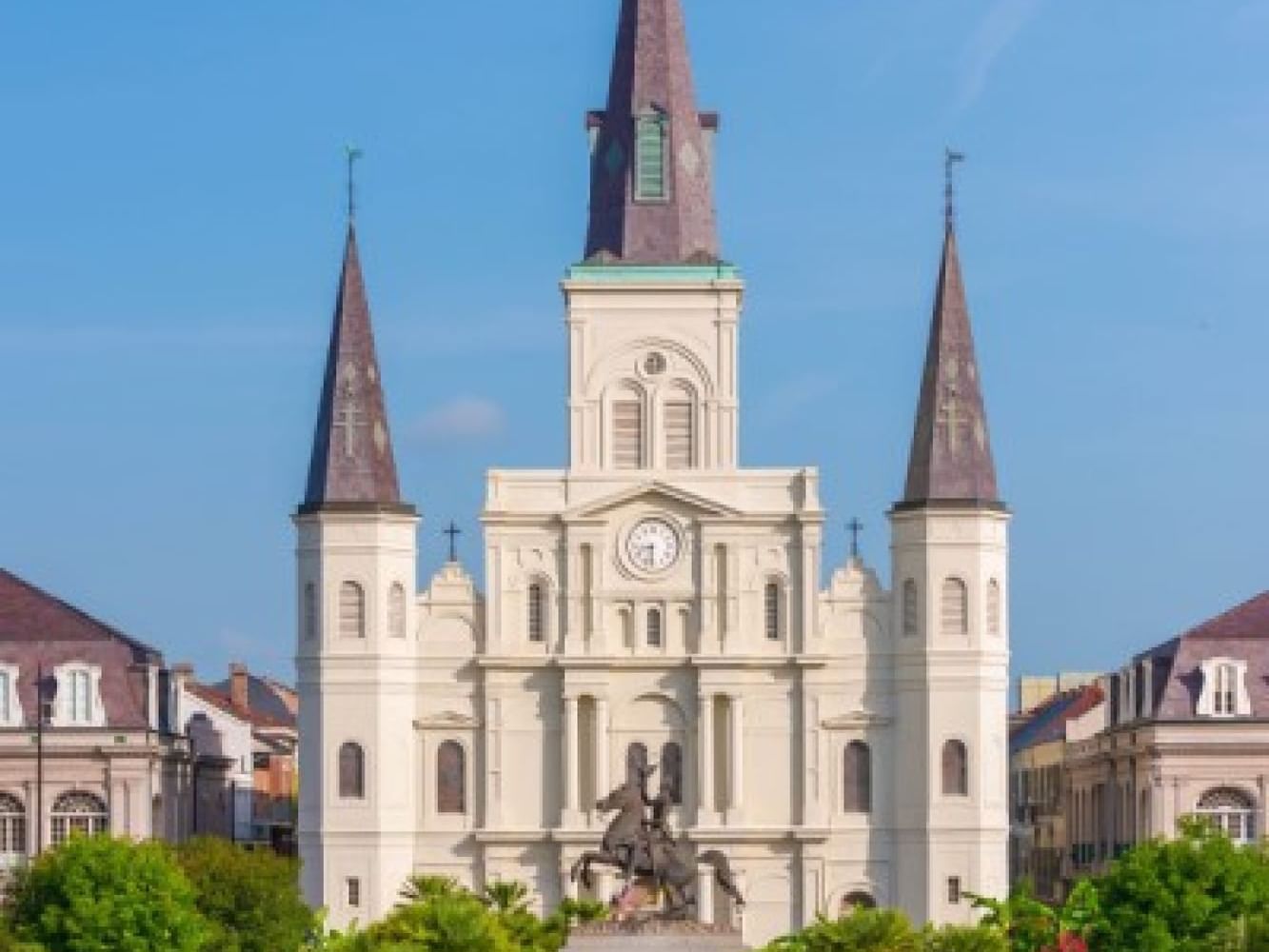The History of Jackson Square
It was during this battle that Jackson and his men protected the city from the British troops that were attempting to gain control of the port, boosting a sense of national pride that had started to wane in America. In fact, the Battle of New Orleans has long been considered one of the greatest American victories of the War of 1812, and it was also the final engagement between the British and US Armies during the war.
It was in 1815, after this defining battle, that what is now one of the most iconic destinations in the French Quarter was named in General Andrew Jackson’s honor. This is, of course, the extremely popular and much-visited Jackson Square. However, this famous place to mingle, stroll, and play was not always the place it is today. Originally, it was known as The Place d’Armes (Plaza de Armas in Spanish), and it was used as a public square and open-air market just a few short years after New Orleans was first founded as a French trading camp in 1718.
Thanks to its perfect central location and close proximity to the Mississippi River, the square was considered the epicenter of life in the city. Other important factors that added to this significant status were the fact that bordering the square was both the governor’s mansion (now the famous Cabildo - Louisiana State Museum) and a church (now home to the stunning Saint Louis Cathedral).
The Place d’Armes, designed by architect Louis Pilié, functioned as the absolute hub of New Orleans throughout the various rules of the French, Spanish, French again, and then Americans after the Louisiana Purchase in 1803. In 1814, the square was given a facelift that incorporated formal gardens, an iron fence, and a collection of walkways and benches for the public to be able to relax and enjoy the views. This redesign of the plaza is credited to Baroness Pontalba, who also built the Pontalba Apartments that stand on two sides of the square and are reputedly the oldest continuously-rented apartments in the USA. Today the upper floors hold an assortment of rentable apartments while the lower floors are host to a collection of shops and restaurants.
In the center of the square, a bronze statue of General Andrew Jackson was erected, and to this day Jackson Square remains a place where people from all over come to enjoy each other’s company, shop, see fantastic art, and experience what it is to be a part of New Orleans. The square itself is completely pedestrian, so you can walk and enjoy your surroundings freely as you sip on a coffee or enjoy a sweet treat.
When your travels bring you to NOLA, Jackson Square is definitely worth a visit or two and should be at the top of your to-do list. Ready to book your stay? Let the charming and storied Andrew Jackson Hotel be your host while you enjoy your time in the Big Easy.
